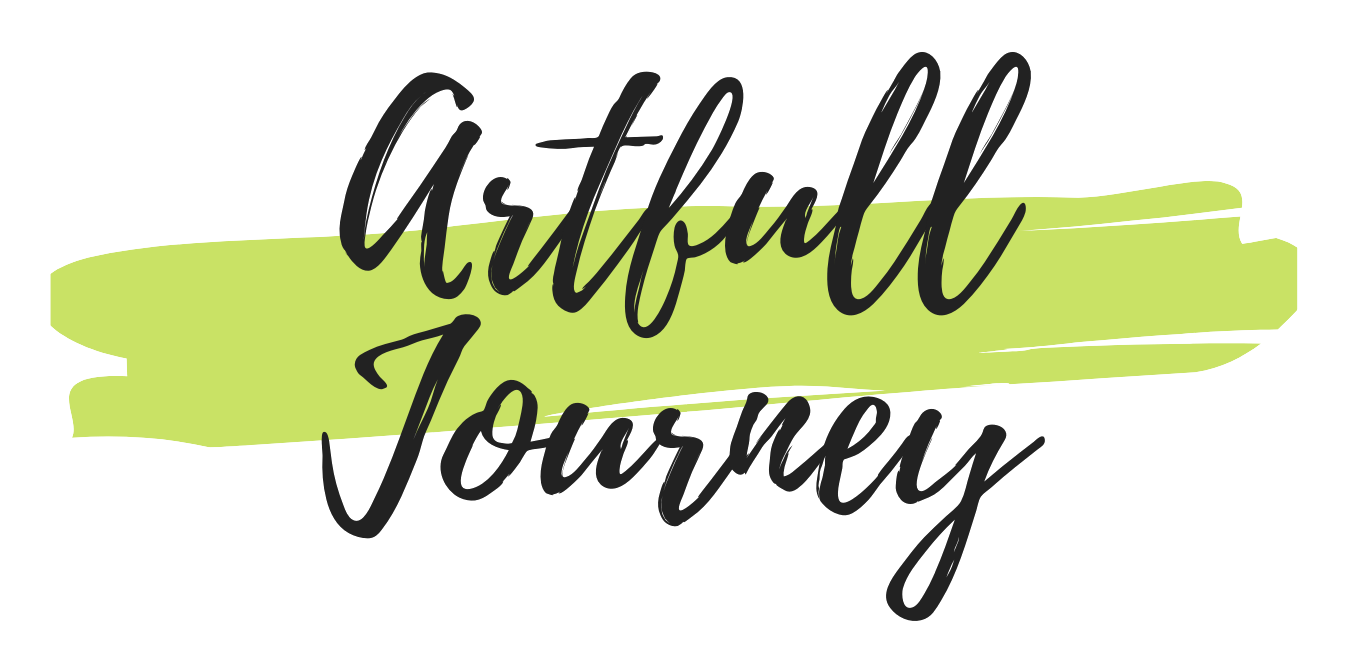Imagine a world where creativity flows freely, unlocking innovative solutions and fostering personal growth. While many associate creativity with artists or musicians, the truth is that everyone possesses the ability to harness their creative potential. Art and creativity exercises are powerful tools that transcend age, profession, and background, offering benefits that extend far beyond the canvas or paper. From enhancing mental well-being to boosting problem-solving skills, these exercises act as a bridge to a more enriched life. Whether you’re an adult seeking renewed inspiration, a student navigating academic challenges, or a professional looking to spice up your routine, art and creativity exercises provide a universal pathway to self-discovery and creativity. This article delves into how these exercises can be adapted for various demographics, from teenagers exploring their identity to business professionals seeking innovative solutions. By understanding the transformative power of creativity, we can unlock our potential and embrace a world where art and expression know no bounds.
Key Takeaways
– Foster a growth mindset to embrace innovation and exploration, celebrating failures as learning opportunities.
– Provide structured opportunities through guided exercises like daily writing challenges or collaborative projects.
– Explore new experiences such as visiting art galleries, taking cooking classes, or attending workshops to spark creativity.
– Practice mindfulness to relax and focus, using techniques like mindful breathing or body scans.
– Collaborate and network by joining creative groups or hosting exchange sessions to inspire each other.
– Utilize digital tools like digital art software or AI generators to enhance creative expression.
– Set realistic goals by breaking objectives into manageable tasks, such as creating a small series or experimenting with styles.
– Emphasize creativity as a muscle that grows with consistent practice and patience.
- Embrace a growth mindset by viewing challenges as opportunities for learning and innovation.
- Explore new experiences to broaden perspectives, whether through travel, hobbies, or cultural immersion.
- Practice regular creativity by dedicating time to creative activities, even briefly daily.
- Stay curious and inquisitive to ask questions and explore diverse viewpoints for innovation.
- Learn from others by studying successful creators and using their techniques as foundations.
- Set creative goals to give direction and motivation for your endeavors.
- Experiment and iterate to see failures as stepping stones toward success.
- Find inspiration in everyday moments through observation and documentation.
- Seek feedback and refinement to refine ideas and gain valuable perspective.
- Engage in daily creative practice to stimulate thinking through activities like journaling or sketching.
- Expand horizons by trying new activities such as learning languages or cooking international cuisines.
- Maintain a routine with variety to keep your mind fresh and avoid creative stagnation.
- Prioritize sleep to support brain function and memory consolidation.
- Practice mindfulness to sharpen focus and increase awareness of subtle details.
- Learn from others by analyzing creative individuals’ techniques and approaches.
- Embrace failure as a chance for growth and innovation, pushing beyond comfort zones.
- Stay curious and open-minded to explore diverse viewpoints and drive innovation.
- Organize your ideas using tools like planners to retrieve and combine thoughts effectively.
- View creativity as trainable through consistent practice and targeted strategies.

How to Practice Creativity in Art
Creating art requires a blend of technique and imagination. Here are some effective strategies to enhance your creativity:
- Set Aside Dedicated Time:** Schedule regular sessions dedicated solely to creating art. Consistency helps build momentum and keeps your creative muscles active.
- Explore Different Mediums:** Experiment with various materials and tools beyond your usual preferences. This can spark new ideas and approaches.
- Embrace Failure as Feedback:** Don’t fear mistakes. View them as opportunities to learn and grow your skills.
- Seek Inspiration:** Look at works from different artists, cultures, and time periods to fuel your creativity. Visit museums, watch documentaries, or explore online galleries.
- Collaborate with Others:** Work with peers or mentors to gain new perspectives and ideas. Collaboration can often lead to surprising creative outcomes.
- Experiment with New Techniques:** Regularly try unfamiliar methods or styles to push your boundaries and discover fresh ways to express yourself.
- Reflect on Your Unique Style:** Identify what makes your artwork distinct and refine it over time. Understanding your style can help you develop it further.
- Keep a Creative Journal:** Document your thoughts, ideas, and experiments in a journal. This habit can help clarify your vision and track your progress.
- Engage with Art Communities:** Join forums, groups, or classes where you can share ideas and receive feedback. Interaction with others can reignite your passion for art.
- Stay Curious and Open-Minded:** Approach every project with curiosity. Ask questions, explore possibilities, and remain open to change.
By consistently applying these strategies, you can unlock new dimensions of creativity and elevate your artistic expression.
Activities That Help Boost Creativity
Creativity thrives in diverse environments and can be cultivated through intentional activities. Here are some effective ways to nurture and enhance your creative potential:
- Engage in Artistic Pursuits : Whether it’s painting, drawing, or sculpting, art allows for self-expression and stimulates the imagination. Explore different mediums to discover your creative style.
- Practice Mindfulness : Techniques like meditation and deep breathing can quiet the mind, leaving room for innovative thoughts and ideas to emerge.
- Learn New Skills : Delve into new hobbies or take classes to expose yourself to fresh concepts and approaches that can spark creativity.
- Socialize and Collaborate : Interacting with diverse groups can introduce new perspectives, inspiring creative solutions and collaborative projects.
- Organize Your Space : A tidy environment reduces stress and allows for focused creativity, whether you’re working on a project or planning an event.
- Set Personal Goals : Clear objectives give direction, helping you channel your creativity into meaningful and achievable projects.
- Explore Nature : Spending time outdoors, such as hiking or gardening, can provide inspiration and refresh your senses.
- Practice Gratitude : Reflecting on positive experiences can shift your mindset, fostering a more creative and optimistic outlook.
- Embrace Failure as Learning : Viewing mistakes as opportunities to grow can reduce fear and encourage creative risk-taking.
By incorporating these activities into your routine, you can unlock your creative potential and find new ways to innovate and express yourself. Remember, creativity is a dynamic process that benefits from exploration and practice.

How to Exercise Your Creativity
Exercising your creativity involves deliberate practices that stimulate imagination and encourage innovative thinking. Here are effective strategies to enhance your creative abilities:
- Explore New Perspectives: Engage with diverse media, such as art, music, literature, and nature. Exposure to different cultures and ideas broadens your perspective, fostering creativity.
- Embrace Curiosity: Ask questions, explore unknowns, and seek answers. Curiosity drives discovery and innovation, leading to unique solutions and fresh ideas.
- Experiment Freely: Don’t fear failure. Experimentation is key to learning and growth. Try new techniques, play with tools, and explore different styles.
- Set Creative Goals: Define clear objectives and work towards them. Break down large projects into smaller steps, which makes the process manageable and focused.
- Collaborate and Share Ideas: Working with others can spark new thoughts and inspiration. Discuss challenges, exchange insights, and gain new perspectives.
- Practice Mindfulness: Clear your mind by meditating or focusing on the present moment. This reduces stress and allows for clearer, more creative thinking.
- Stay Inspired: Surround yourself with inspiring environments and people who challenge your thinking. Artistic communities and workshops can be valuable resources.
- Document Your Process: Keep a journal or sketchbook to track your ideas and progress. Reviewing past work helps identify patterns and evolution in your creativity.
- Take Regular Breaks: Allow your mind to rest and wander. Short breaks can refresh your mindset, making you more open to new ideas and solutions.
By consistently practicing these strategies, you can unlock your creative potential and develop innovative approaches to various challenges. Remember, creativity is a muscle that grows with use and practice.

How to Teach Creativity to Adults
Teaching creativity to adults involves fostering a mindset that embraces innovation and exploration. Here are effective strategies to help adults cultivate their creative abilities:
1. Encourage a Growth Mindset
Adults often fear failure or criticism, which can stifle creativity. Emphasize that creativity is a process and mistakes are part of learning. Share stories of famous creators who faced failures before achieving success.
2. Provide Structured Opportunities
Creativity thrives in structured environments. Offer guided exercises, such as journaling prompts or collaborative projects, to give adults a starting point. For example:
- Daily Writing Challenge: Dedicate 15 minutes each day to write a short poem, reflection, or story.
- Collaborative Art Project: Work on a shared canvas or digital tool to encourage teamwork and diverse ideas.
3. Explore New Experiences
Adults often get stuck in routine. Suggest trying new activities to spark creativity. For instance:
- Visit an Art Gallery: Explore museums or online exhibitions to inspire new perspectives.
- Take a Cooking Class: Learn to create unique recipes or experiment with flavors.
- Attend a Workshop: Join workshops focused on creative skills like photography, calligraphy, or digital design.
4. Practice Mindfulness
Creativity requires relaxation and focus. Introduce mindfulness practices to reduce stress and open up creative channels. Simple exercises include:
- Mindful Breathing: Take deep breaths for 5 minutes daily to clear the mind.
- Body Scan: Gently scan your body to release tension and promote relaxation.
5. Collaborate and Network
Creativity often flourishes in group settings. Organize meetups or online groups where individuals can share ideas and inspire each other. For example:
- Join a Creative Group: Participate in local or online communities dedicated to creativity.
- Host Creative Exchange Sessions: Facilitate discussions where members share their creative projects and challenges.
6. Utilize Digital Tools
Technology provides endless opportunities for creativity. Encourage adults to explore tools like:
- Digital Art Software: Use programs like Procreate or Adobe Photoshop for digital art.
- AI Generators: Experiment with AI tools to create unique visuals or content.
- Virtual Collaboration Platforms: Work on joint projects using platforms like Jamboard or Google Docs.
7. Set Realistic Goals
Adults may feel overwhelmed by ambitious creative goals. Break objectives into smaller, achievable tasks. For example:
- Create a Small Series: Write one short story per week or paint one small masterpiece each month.
- Experiment with Styles: Try different art forms or techniques to find your unique voice.
By incorporating these strategies, adults can unlock their creative potential and discover new ways to express themselves. Remember, creativity is a muscle that grows with exercise, so consistent practice and patience are key.
How to Regain Creativity as an Adult
Creativity is a skill that can be cultivated and maintained throughout life, regardless of age. As adults, we often face unique challenges that can hinder our creative expression, but with dedication and purpose, it’s possible to reignite your creative spark.
- Embrace a Growth Mindset:** Approach creativity as a journey rather than a destination. Celebrate failures as learning opportunities and view challenges as chances to innovate. This mindset fosters resilience and opens doors to new ideas.
- Explore New Experiences:** Engage in activities that stimulate your senses and broaden your perspective. Whether it’s traveling to unfamiliar places, experimenting with new hobbies, or immersing yourself in diverse cultures, exposure to difference sparks creativity.
- Practice Regular Creativity:** Dedicate time to creative activities, even if it’s just a few minutes daily. Consistency helps establish a routine that nurtures creativity, allowing ideas to flow more naturally over time.
- Stay Curious and Inquisitive:** Ask questions, explore different perspectives, and seek out information that challenges your existing knowledge. Curiosity is the foundation of innovation and drives creative thinking.
- Learn from Others:** Study successful creators in your field or unrelated fields. Analyzing their techniques and approaches can provide fresh insights and inspire new ways of thinking. Visit Artful Journey to discover resources and insights for artists and art enthusiasts.
- Set Creative Goals:** Define clear objectives for your creative endeavors. Whether it’s completing a project, mastering a technique, or exploring a new medium, having goals gives direction and motivation.
- Experiment and Iterate:** Don’t fear failure; instead, see it as part of the creative process. Experimentation leads to discovery, and iterations refine your approach. Embrace imperfection as a stepping stone to success.
- Find Inspiration in Unexpected Places:** Look for creativity in everyday moments. Observation can unlock fresh ideas and combinations that might not occur otherwise. Keep a journal to document observations and ideas as they come.
- Seek Feedback and Refinement:** Share your work with trusted peers or mentors who can offer constructive criticism and suggestions. This feedback helps refine your ideas and provides valuable perspective.
Remember, creativity is not confined to a specific age or stage of life. By embracing these strategies, you can continue to grow as a creative individual and contribute meaningfully to the world around you.

How to Train Your Brain for Creativity
To enhance your creativity, consider implementing these strategies:
- Daily Creative Practice
- Dedicate time each day to engage in activities that challenge your thinking. Journaling, sketching, or experimenting with new skills can stimulate creativity.
-
Explore New Experiences
- Expand your horizons by trying new activities such as visiting museums, learning a foreign language, or cooking international cuisines to broaden your perspective.
-
Maintain a Routine with Variety
- Establish a consistent routine while incorporating variety to keep your mind fresh. Balance consistency with new experiences to avoid creative stagnation.
-
Prioritize Sleep
- Ensure adequate sleep, particularly REM sleep, to support brain function and memory consolidation, which can enhance creativity.
-
Practice Mindfulness
- Engage in mindfulness or meditation to sharpen focus and increase awareness of subtle details, fostering creative insights.
-
Learn from Others
- Study the works of creative individuals for inspiration and techniques, using their ideas as a foundation for your own creations.
-
Embrace Failure
- View failures as opportunities for growth and innovation. Embrace risks to push beyond comfort zones and drive creative progress.
-
Stay Curious and Open-Minded
- Cultivate curiosity by asking questions and exploring diverse viewpoints. This approach can lead to breakthroughs and innovative solutions.
-
Organize Your Ideas
- Utilize tools like planners or digital apps to organize thoughts, making it easier to retrieve and combine ideas effectively.
By consistently applying these strategies, you can train your brain to think more creatively, leading to greater innovation and personal growth.




0 Comments